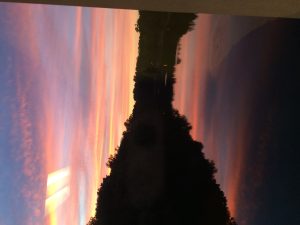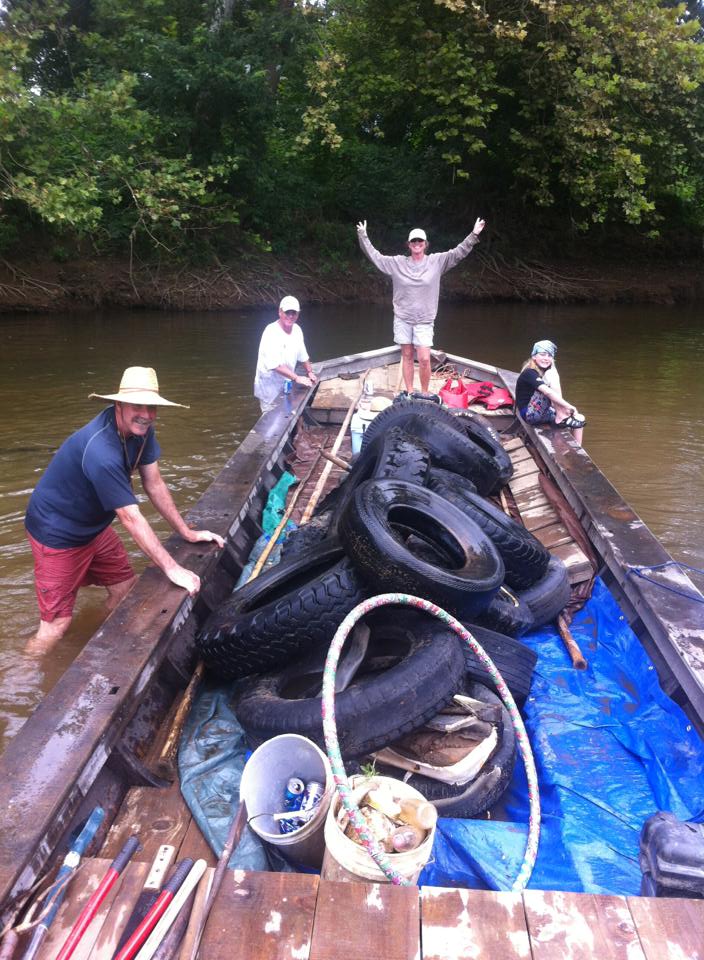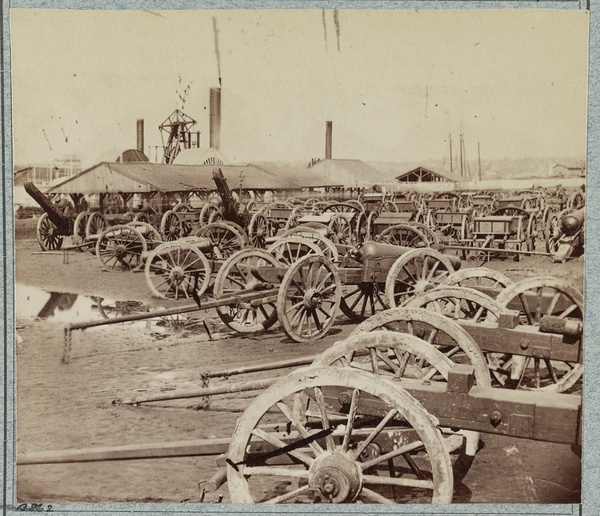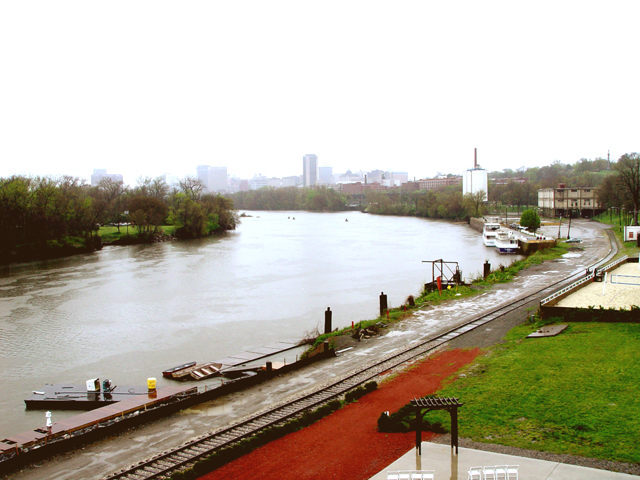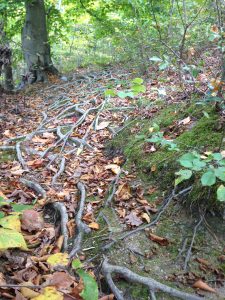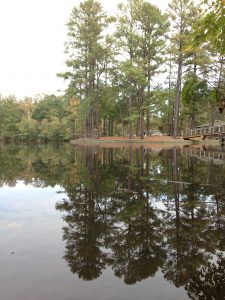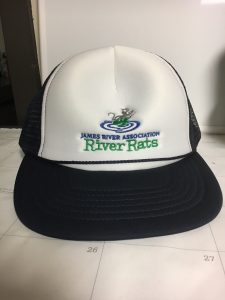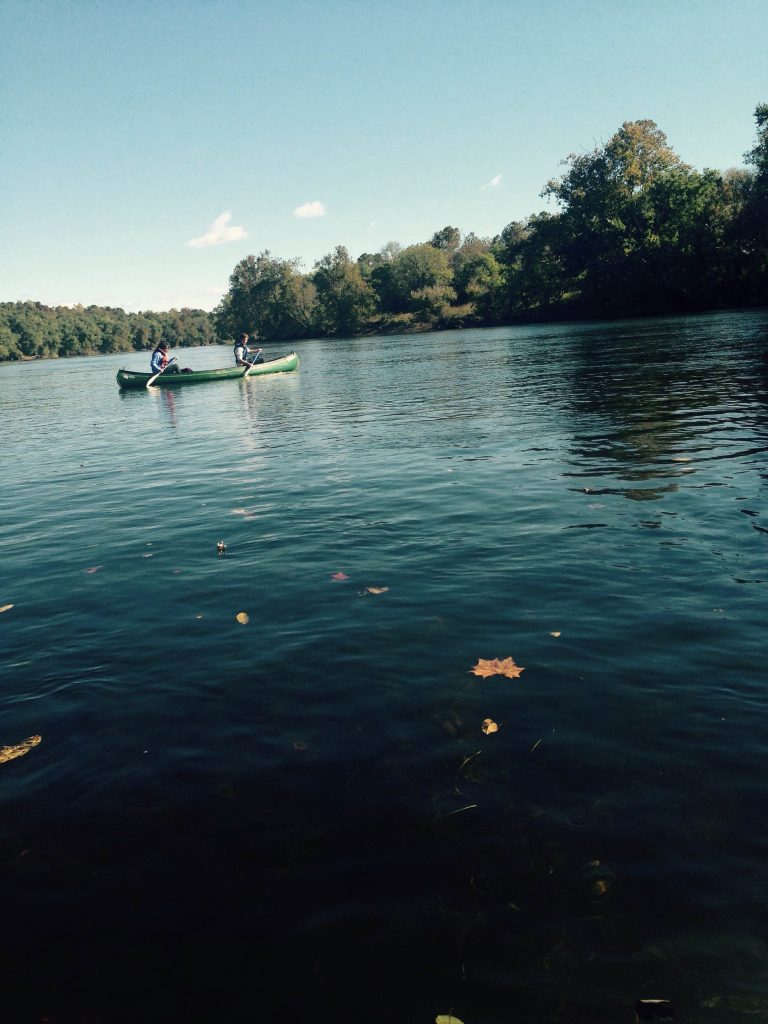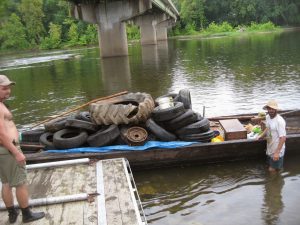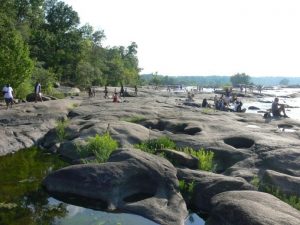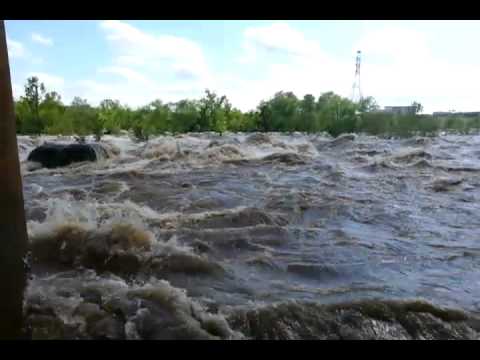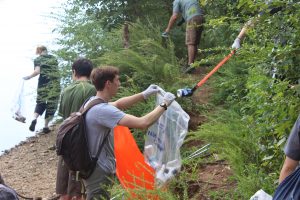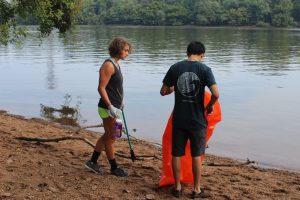The First Visit:
With my yellow field journal in hand, I slipped out the back door of Grey Court in search for adventure. My mind was teeming loudly with the thoughts of the day and all the journal articles that I knew I would have to include in this reflection were beginning to jumble together. As I rounded the west side of Westhampton Lake, the brazen hip-hop melodies booming from the enormous baseball field speakers violently collided with my whirling thoughts. I knew I could never reflect here.
Speeding cars whipped around the bend and came hurtling towards me as I walked to the lake’s input by foot. The road narrowed right at the spot where the water passed onto campus grounds, so I jumped down off the asphalt and onto the slippery banks of the stream on the west side of the road. I was hoping to find a slice of serenity here at Kerry’s Ditch, but instead I only got a view of a cement riverbed, nearly stagnant water and brambles.
I sat there in the mud waiting for Cronon to descend from the treetops and remind me that nobody can “flee into a mythical wilderness to escape” society. Although I was crouching in a thicket of jewel weed by the stream, the road, mere feet away, seemed to suck all the natural peace from my surroundings. What kind of reflection spot was this?
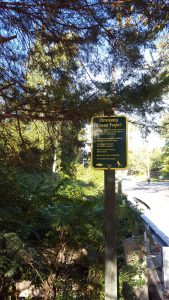
“To improve water quality and help reduce erosion, the buffer of trees, shrubs and groundcover along this stream was planted by: (…)”
As I began to grope my way up to the road in preparation to leave, I spotted movement in the corner of my eye. To my astonishment, I spied two does standing in a patch of mimosa upstream from the road. All of us instantly froze and gazed at each other for quite some time before one deer flipped its tail up and bounded deep into the woods, only to be followed by its friend. “There’s some wilderness for you, Cronon” I thought as I emerged back on the road. That’s when I noticed a small green sign titled, “Community Stream Project.” The text on the sign explained how the stream’s riparian zone was restored in 2006 in order to improve water quality and reduce erosion.
As I trudged my way back onto campus, I admitted defeat. Sure, I saw some flora and fauna, but was it really wilderness? Clearly, the sign showed how this side of the stream was no secret to others. My reflection spot proved to be busy, exposed and influenced by human factors so much so that I could not find calmness. Maybe Cronon was wrong.
But how long is the stream’s riparian zone? How deep does it penetrate into the woods? If it had a sign, then it’s watershed must extend somewhere, right? And where did those two deer run off two anyways? After posing these questions a few days later, I knew that there must have been more for me to experience. My adventure wasn’t over yet…
The Return:
The overgrowth was too thick for me to walk upstream on the water’s banks, so I headed north on Boatwright Drive, turned left onto New Fraternity Row and slipped through a gap in the back fence of a lodge. As the music from the baseball field faded away and the asphalt parking lot gave way to forest floor, I forged into the woods in search for the stream that feeds into Westhampton Lake.
The thin trees and leafy ground underfoot expanded broadly before me and I could easily make out trails of erosion. Water from the nearby residential areas poured into trenches that lined the streets and ultimately flowed directly into this patch of woods via tin pipe. My long desired revelation finally came as I understood exactly why the erosion marks streaked down the small hill towards my original reflection spot. All the rain that fell in this expansive residential area either percolated into the ground or made its way to this patch of woods, wearing away the earth on its journey to Westhampton Lake. My meek, nearly stagnant stream from last week was actually a massive funnel for the runoff of all this land. Campus has no boundaries and is instead connected to these adjacent woodland and residential areas. Now that I perceived my reflection spot as a doorway to so much more, my understanding of it had drastically changed from my first visit.
While brooding on my new sense of scale, I gathered my notes and prepared to head back to campus; however, there was a large figure blocking my path to the road. A regal buck with a full rack of antlers was patiently gazing right at me. Cronon was right: wilderness surrounds us everywhere. I had stumbled upon a sublime patch of pure and rugged nature that was mere steps away from busy roads and loud baseball music. Face to face with the majesty of wilderness, I could finally reflect and reach harmony.




